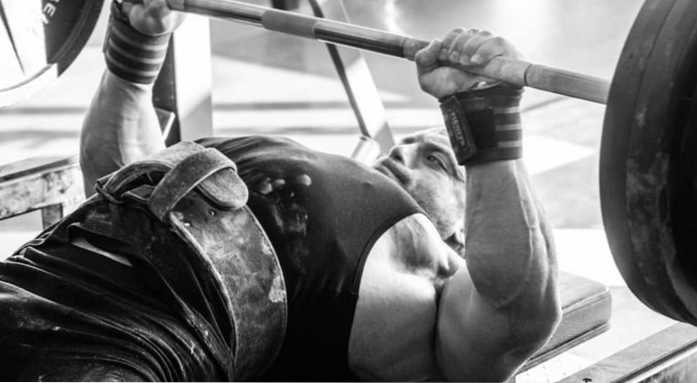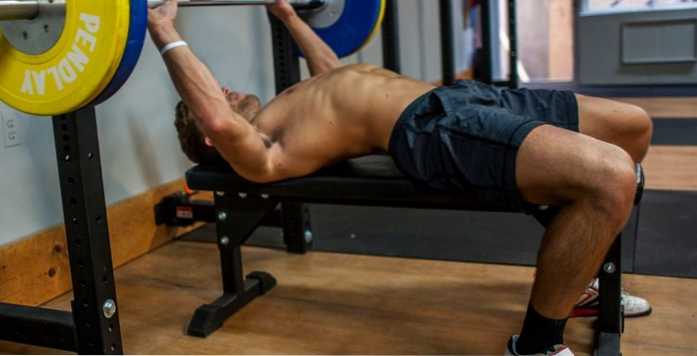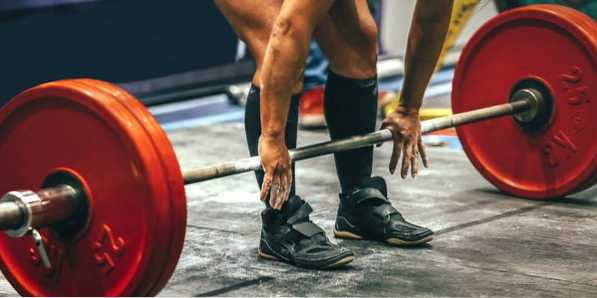
RPE Vs Percentage Based Training How to Combine Them for Better Results

When it comes to training optimally for strength gain, there are a million different ways to skin the cat. But what does that mean exactly? Well, in every well-constructed workout program there are constants that need to be present to progress such as:
- Progressive overload
- Strategic loading with adequate volume
- Proper exercise selection per one's goals
This is to only list a few, and it's how we approach and apply these constants to our training where the details come in.
The details that we'll discuss in this article include how to use percentages with the use of RPE to dictate load. Arguably, one of the best ways to regulate training is by blending both percentages and RPE together to create accurate energy and fatigue measurements.
Author's Note: Before reading further, I want to be clear, I think both percentages and RPE have a ton of use for strength focused programs, and this article is not intended to sway you into using one over another, or for only allowing the methodologies provided below. Percentages and RPE are tools that should be utilized based on the context of things like your training age, goals, preferences, and needs.

What Is RPE/RIR Based Training?
Rate of perceived exertion (RPE) is an auto-regulatory style of training that uses intrinsic feedback to dictate intensities. In this article, we'll reference the reps-in-reserve (RIR) based RPE scale, which is a way of using RPE ratings with practical estimations of how many reps one can successfully complete within said set. (1)
An example of the RIR-based RPE scale is below.
- 10 - Absolute maximum
- 9.5 - No more reps could be performed, but weight could be increased
- 9 - 1 more repetition could be completed
- 8.5 - 1-2 are in the tank
- 8 - 2 reps are left
- 7.5 - 2-3 reps are left
- 7 - 3 reps are left
A few key benefits to this style of training are that it accounts for variability in energy levels and strength. True maxes will vary on a regular basis, and this style of training allows lifters to adapt their intensities to real-time, intrinsic feedback. Another benefit is that it's a more practical way of loading for long-term progression, as using only percentages can have a lower ceiling.
Compared to percentage style training, the drawbacks of RIR-based RPE training are much more individual and not as universal. Undershooting and overshooting are generally the two biggest drawbacks for this style of training, and these will comedown to how objective a lifter is with their training, capabilities, and prescribed intensities.
What Is Percentage Based Training?
In short, percentage based training is a way of prescribing load based on percentages of one's 1-RM. Percentages can be based on a true 1-RM or an estimated 1-RM, and both can be useful as guidelines when working through various intensities, and generally, beginners can run this style of loading slightly easier compared to intermediate and advanced athletes.
An example of percentage based training can be seen below,
- 1-RM = 300 lbs
- 3 x 5 @75% = 3 x 5 with 225 lbs
The main benefit of percentage based training is that it's straight forward and easy to understand. For a beginner, the most important aspect of training is simply getting in reps with various intensities, so while their 1-RM is lower, this style of training is practical due to their ability to handle the amount of stress they're placing on the body due to the lighter loads.
A few drawbacks for this style of loading - when used exclusively - includes the variability for how one feels on a daily basis.
For example, 80% is not always 80%, especially at various volumes.
Things like stress, lack of sleep, poor nutrition, and much more can dictate what percentages can feel like on a daily basis at certain rep ranges. Another drawback to percentage-only training is the lack of set-to-set feedback, so if you are rundown, then it's tougher to manipulate your following sets without overreaching and accumulating too much fatigue.

Percentage Vs RPE Training
When it comes to using percentages and RPE in training, it's important to recognize that their best uses will always come down to the context of every individual. There's a time and place for each and both. One is not inherently better than the other, however, we could argue that one is much more strategic when it comes to long-term success, and that is of course, RIR-based RPE training.
RPE Vs Percentage Based Training Research
For context, in a 2018 study published in the Frontiers of Physiology, authors assessed the differences in using training percentages versus RIR-based RPE in respect to a participant's strength gain and muscle thickness.(2) Trained individuals were split into two groups and followed an 8-week program using the different loading protocols and then assessed their 1-RM strength and muscle thickness following the exercise intervention.
Both groups improved their 1-RM strength, but authors noted that there was a slight benefit to using the RIR-based RPE scale compared to traditional percentage based loading. They speculated that this could be due to the higher loading this group demonstrated throughout various workouts based on their intrinsic feedback. When it came to muscle thickness, both groups improved to a similar degree.
Since both loading protocols have use and benefit, then it makes sense to actively seek out which would be best for one's particular needs and goals. To take it a step further and if someone wants to work with both loading forms, then we can blend the protocols together in multiple ways to dictate daily intensities and training
How to Use RPE and Percentage Based Training Together
There are multiple ways to integrate both percentages and RPE in training, and we'll include three below. It's important to note that as you read through the examples below, they can be interpreted and integrating to match your training needs, and the below are simply examples of how to use each loading modality together.
1. Percentage Range With RPE
If you're trying to truly dial in on your daily levels of strength and energy, then setting percentage parameters and coupling them with RPE ratings is a great way to do so. This is a method that I learned from Avi Silverberg, and it's completely changed my accuracy with gauging daily capabilities.
For this method, you'll pick a percentage range that you'll work within and use corresponding RPEs to scale increases and decreases in weight within that set percentage range. Silverberg points out that he likes to use 5% ranges when working between 65-85% and 3% ranges when working above 85% of one's 1-RM.
An example of this in action could look like the following:
- 4 x 5 @ 75-80% maintaining an RPE 8
For this scenario, the lifter will perform four sets of five within the intensity range and increase and decrease weight based on what an 8 registers for them.

When an athlete should decrease…
Let's say they [the lifter] hit the third set and they're pushing 80%, but they rate it a 9, then they would drop the intensity within the prescribed range between 75-79% and finish their sets.
When an athlete should increase…
Conversely, if an athlete is on let's say 77% for their third set and it's easy, then they have the ability to increase to 80% without overshooting based on their RPE parameter.
This methodology can be great because it allows lifters to stay consistent with keeping RPE within their parameters and provides a little wiggle room for “strong” and slightly “off” days. If we have an initial range to wiggle with, then we can increase and decrease with strategy with less chances of overshooting or undershooting RPEs.
Now, there's always a chance of undershooting or overshooting with this methodology, and if it's consistently happening, then it may be time to revisit your 1-RMs that you're basing your ranges and effort off of.
2. Top RPE Sets With Percentage Based Back-Off/Back Down Sets
Another useful way of using both RPE and percentages in your training is to utilize both for strength focused sets and back-off or back down sets. With this loading protocol you'll work up to a heavier lift, then base your backoff sets on a percentage that corresponds with your top set.
An example of this in action could look like the following:
- Work up to a triple @9
- Back-off/Back down sets with 3 x 6 @75% of the top set triple
This is a great type of loading for athletes that want to work up to a top strength-focused set, then back-off with volume sets that are slightly easier to manage since they'll already be slightly fatigued.

The back-off sets - while generally manageable with their prescribed intensities - can also be manipulated on a set to set basis. For example, you can set a top end RPE for the back-off sets, too, and if you hit that, then you would decrease load slightly for those sets. So that would look like this below based on our example above,
- Backoff sets with 3 x 6 @75% @ RPE 8 of the top set triple
This is useful because if that top set triple @9 was incredibly taxing, then having some wiggle room on the backoff sets can prevent overreaching at the prescribed intensity. It's basically a foolproof way to not overreach after working with both a strength and volume component.
3. Top Set RPE With Percentages
Probably the most common way to use percentages and RPE with one another is working with a top set RPE approach. For this loading protocol, a lifter will be prescribed sets and reps to perform at a certain percentage, then they will have to finish those sets and reps at a prescribed RPE.
This loading protocol is useful because it allows novice and intermediate lifters to get in multiple reps at an intensity and volume that they can likely handle, and it allows them to dip their toes into RPE training.
An example of this in action could look like the following:
- 6 x 6 @76% with a top set RPE of 7.5
For athletes that want to learn their limits and also improve their intrinsic autoregulation means, then this is great methodology for doing so. It also provides lifters with the ability to increase and decrease weight based on their real-time feedback.

When an athlete should decrease…
Let's say by set 4, a lifter is already rating the set as a tough 7.5 or 8. If this is the case, then they should decrease weight slightly so they'll hit their prescribed 7.5 RPE on the final set.
How much of a decrease should be based on the weight being used and intrinsic feedback. Generally, 2.5-5% is a good starting place, but these percentages will relate to how the last set was rated (more % off the set was overshot by a lot, and less for undershot).
When an athlete should increase…
In reality, if an athlete is moving the weight with great form at the percentage prescribed and they're within one RPE, then keep the same weight on the bar. The only time it would be worth increasing the load with this method in-between sets is if there's a 1.5< rating of the prescribed final set RPE and an athlete still has more sets to complete.

A Factor to Consider When Using RPE and Self-Coaching
Rest Times
When using RIR-based RPE and percentages in a program one thing to consider before simply throwing in RPEs and percentages on various training days is using rest times.
If you train alone, it's usually a good idea to establish parameters that will help you remain objective with your true exertion levels, and one way to do this is with the use of dedicated rest times. Rest times can be a useful tool to help you remain objective and honest with your energy levels when working with certain percentages and RPEs.
For example, allowing yourself 3-minutes of rest can be useful for keeping consistency across multiple training days, and it can be useful for time restrictions because not everyone has unlimited time to train. If you choose to use rest times, it's a good idea to relate time ranges to intensities being used. Basically, be realistic with your rest without over or under doing it.
Now obviously, if your goal is maximal effort sets like singles and doubles, then you may want to axe rest times to fully cap out on your energy levels and strength potential, but for general training day, rest times are useful as another tool for autoregulation.
Wrapping Up
When it comes to structuring your training, it's important to consider appropriate forms of loading to reach your goals. Percentage and RPE-based training are tools that every lifter can adapt and use to accomplish their goals, and the context of one's situation should dictate best uses with each of these loading modalities.
RPE and Percentage Based Training FAQs
What is percentage based training?
Percentage based training is defined as dictating load based off one's true or estimated 1-rep max. Every percentage used will represent an amount of one's 1-RM and reps will vary based on the percentage prescribed in a workout.
What is RPE based training?
Rating of perceived exertion (RPE) is a training methodology that uses a scale to autoregulate training with intrinsic and real-time set-to-set feedback.
What is reps in reserve (RIR)?
Reps-in-reserve is a scale that relates to RPE that helps lifters predict how many reps they have left in the tank that they can successfully compete at various RPE ratings.
What are the benefits of RPE training?
RPE and RIR based training are beneficial because they allows lifters to regulate intensities based on how they're feeling on a day-to-day basis. This is useful to ensure there's no overreaching with intensities and it can help fend off accumulation of fatigue.
In addition, RPE and RIR training can be beneficial for helping athletes remain objective about their strength capabilities.
What are the benefits of percentage based training?
Percentage based training is simple in nature, which makes it easy and beneficial for beginners to understand. In addition, percentage based training can help newer athletes create goals for various rep ranges by creating intensity goals.



Nimeni nu a comentat acest articol încă.